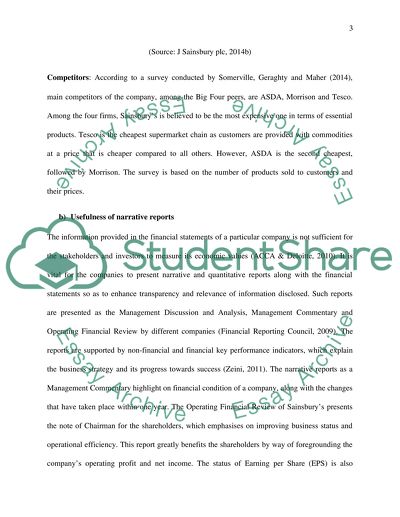Cite this document
(“Questions The annual report of Sainsbury plc (or for any company) Essay”, n.d.)
Questions The annual report of Sainsbury plc (or for any company) Essay. Retrieved from https://studentshare.org/finance-accounting/1654438-questions-the-annual-report-of-sainsbury-plc-or-for-any-company-consists-of-narrative-reports-and-financial-statements-the-first-set-of-questions-below-requires-understanding-of-narrative-reports-while-the-second-set-of-questions-require-understanding
Questions The annual report of Sainsbury plc (or for any company) Essay. Retrieved from https://studentshare.org/finance-accounting/1654438-questions-the-annual-report-of-sainsbury-plc-or-for-any-company-consists-of-narrative-reports-and-financial-statements-the-first-set-of-questions-below-requires-understanding-of-narrative-reports-while-the-second-set-of-questions-require-understanding
(Questions The Annual Report of Sainsbury Plc (or for Any Company) Essay)
Questions The Annual Report of Sainsbury Plc (or for Any Company) Essay. https://studentshare.org/finance-accounting/1654438-questions-the-annual-report-of-sainsbury-plc-or-for-any-company-consists-of-narrative-reports-and-financial-statements-the-first-set-of-questions-below-requires-understanding-of-narrative-reports-while-the-second-set-of-questions-require-understanding.
Questions The Annual Report of Sainsbury Plc (or for Any Company) Essay. https://studentshare.org/finance-accounting/1654438-questions-the-annual-report-of-sainsbury-plc-or-for-any-company-consists-of-narrative-reports-and-financial-statements-the-first-set-of-questions-below-requires-understanding-of-narrative-reports-while-the-second-set-of-questions-require-understanding.
“Questions The Annual Report of Sainsbury Plc (or for Any Company) Essay”, n.d. https://studentshare.org/finance-accounting/1654438-questions-the-annual-report-of-sainsbury-plc-or-for-any-company-consists-of-narrative-reports-and-financial-statements-the-first-set-of-questions-below-requires-understanding-of-narrative-reports-while-the-second-set-of-questions-require-understanding.


